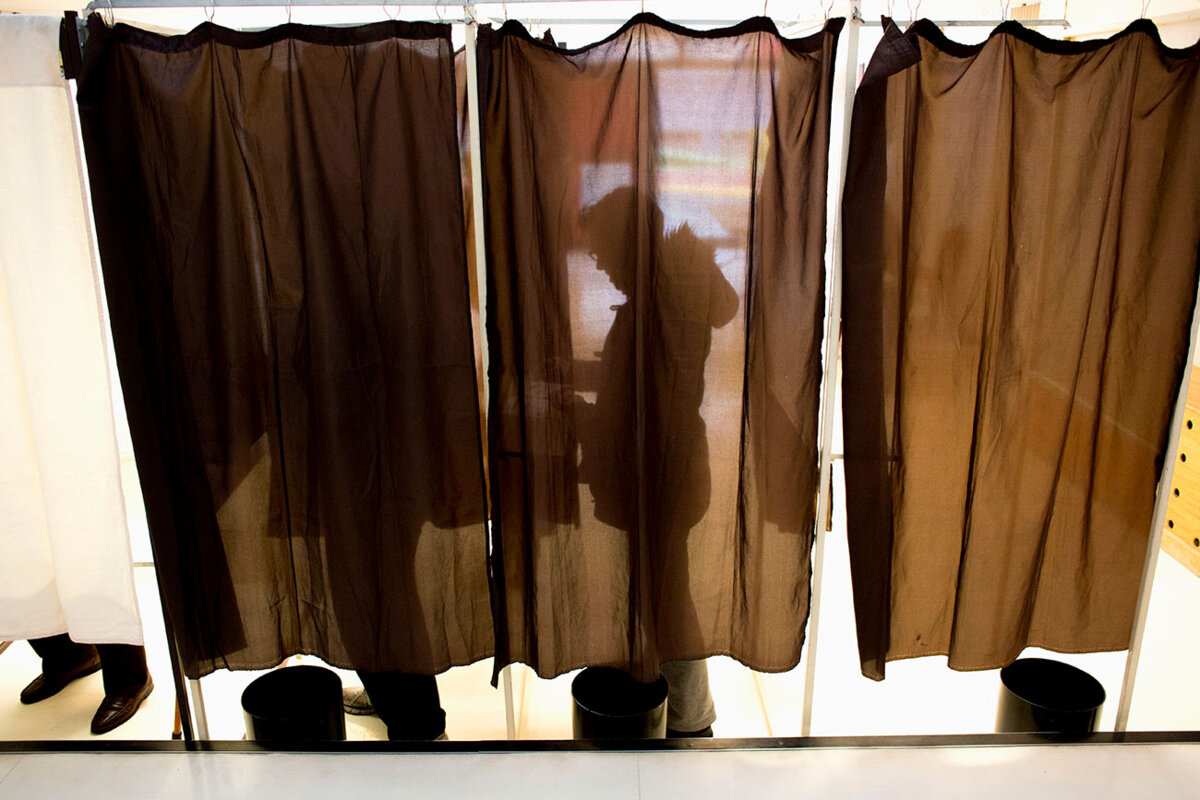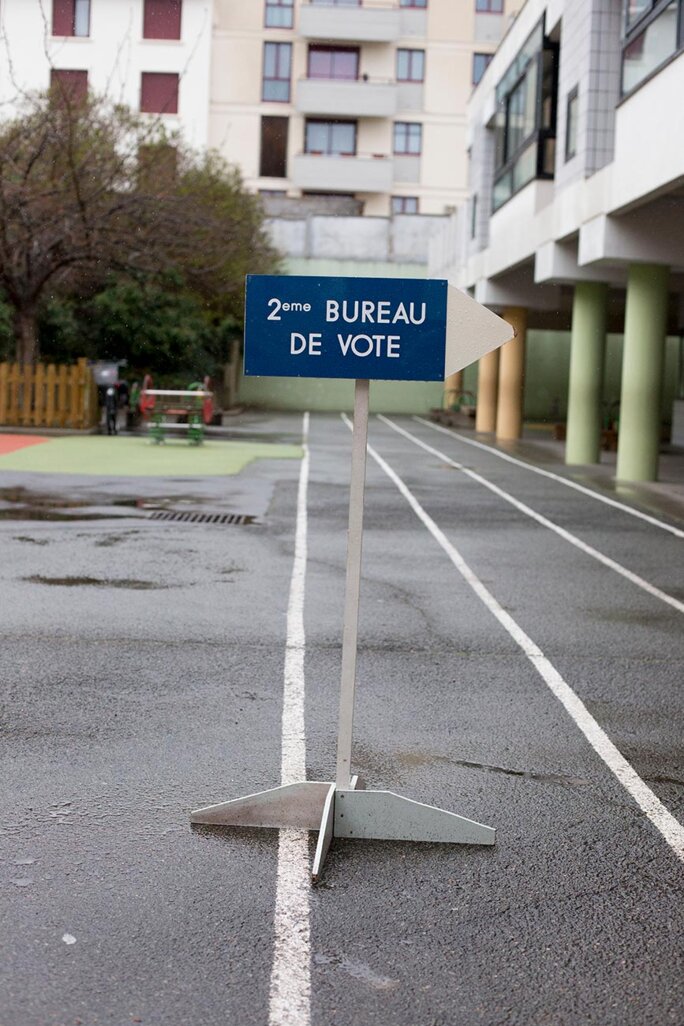As France gears up for the first round of presidential elections on Sunday, one of the major question marks over the results is how strong the abstention rate will be.
There are 12 candidates bidding for the presidency, including Emmanuel Macron who is seeking a second term in office, and the two who garner the most votes will go through to a second-round deciding playoff on April 24th.
While according to opinion polls there are three candidates with a clear lead over the others – in order, Macron, far-right Rassemblement national party leader Marine Le Pen and the radical-left LFI party leader Jean-Luc Mélenchon – both they and their lower-placed rivals face the crucial and imponderable question of the turnout of their electorates on Sunday, a factor that can, as it has in the past, upset the polling predictions. Some have more to lose than others.
Most of the elections, legislative, local and regional councils, have seen a significant rise in abstentions since, and including, the presidential elections in 2017, and it appears unlikely that the first round in these presidential elections will escape the trend. “It would be logical that it will be higher than 22 percent, which was the level in 2017,” commented Patrick Lehingue, a political sciences lecturer with the University of Picardy.

Enlargement : Illustration 1

Anne Jadot, political sciences lecturer with the University of Lorraine, underlined that surprises can never be excluded, citing the turnout in the last European Parliament elections in France, traditionally considered to be of little interest to the French electorate but which in 2019 – an exception – drew a greater participation than predicted by pollsters and commentators. “But an abstention rate of around thirty percent in the first round of the presidential election seems to me, nevertheless, very credible this year,” she said.
For some years now, the abstention rate (which topped 65% in the 2021 regional council elections) has become a recurrently imponderable factor in the exercise of predicting French election results, including the presidential elections. “There is no perfect trend that would show abstentions becoming on each occasion greater than the last time,” said Jadot. “There are fluctuations, but it is true that even the presidential election, [now] creating less interest and desire, is no longer spared.”
An exception to this was the presidential elections in 2007, when the deciding second-round duel was fought between the conservative Nicolas Sarkozy and the socialist Ségolène Royal in a mobilising clash that saw the abstention rate hover at around just 16% in both rounds.
But the following elections in 2012, which ended in a second-round choice between outgoing Sarkozy and the socialist François Hollande (who won with a 51.6% share of the vote), saw an abstention rate of around 20% in both rounds. Those of 2017, in which Emmanuel Macron, then a maverick newcomer, was elected to a backdrop of a collapse of the mainstream parties, saw first-round abstentions at 22.2% rise to 25.4% in the second round – representing one voter out of every four.
Importantly, that second round was fought between Macron and far-right leader Marine Le Pen (which opinion polls predict will be the scenario this month), rallying many mainstream voters across the political divide to vote for Macron (and thus against Le Pen), when Macron garnered 66.1% of votes cast.
That was much a repetition of the second round of the elections in 2002, a landmark in French politics, when Le Pen’s father, the far-right Front National party founder Jean-Marie Le Pen, faced the Gaullist conservative Jacques Chirac.
The 2002 elections were held in a very particular political context. Chirac was seeking a second term in office, and all bets were on a second-round playoff between him and the socialist Lionel Jospin, who was Chirac’s prime minister following the Parti Socialiste’s victory in parliamentary elections in 1997. But large dissatisfaction among the leftwing electorate with Jospin not only contributed to a first-round abstention rate of 28.4%, but also, among those who did turn out, to a dispersion of their votes among other candidates. As a result, Jospin was eliminated, coming third (with a 16.18% share of votes), just behind Le Pen (with 16.86%).
Despite a 20.2% abstention rate in the second round, Chirac was elected with a huge 82.2% share of total votes, many of which were cast in the conservative’s favour by the leftwing electorate to ensure Le Pen lost.
“At the time, opinion polls had a big responsibility because they didn’t take the measure of the danger of Le Pen,” said Lehingue. “But there was also the responsibility of the leftwing electorate, who were waiting for the second round before voting for Jospin.”
The 2017 presidential elections were notable in that fewer voters took part in the second round than in the first (a phenomenon only previously seen in 1969, when the then sizeable Parti Communiste called for a boycott of the second round, fought between the Gaullist Georges Pompidou and the centrist Alain Poher, arguing that they amounted to the same).

Enlargement : Illustration 2

“The second round normally mobilises more, but in 2017 there was a fall of two [percentage] points,” said Jadot. “If you add to the abstentions the blank and spoilt ballot papers, it’s enormous. What that means is that, in the event that the far-right reaches the second round, a third of registered electors refuse to make a choice.”
That also demonstrates the importance of what sociologists and political analysts call the “intermittent vote”. For Vincent Tiberj, a lecturer and research with the Bordeaux political sciences school and a specialist on the issue of abstentions, those who abstain do not represent a single, cohesive block. “It’s not that one never again votes, it’s that one doesn’t vote at every time,” he argues. He believes this “intermittent” voting behaviour is enduringly established among the younger, post-baby boom and millennial generations.
France’s National Institute of Statistics and Economic Studies (INSEE), published a study of voting behaviour in the 2017 presidential elections, and in the legislative elections, also held over two rounds, that followed immediately after. According to that study (in French here), 51% of registered electors abstained at least once in the two elections, while those who voted on each occasion represented 36%. Those who systematically abstained from the polls, INSEE concluded, were “most often young (aged under 30) or old (aged 80 or above)” and, in comparison with other registered voters, “most often had no qualifications, a weaker standard of living, and most often were without active employment, or [were] blue-collar workers”.
Added to this is a disproportionate effect of abstention upon the scores of candidates. This is “an iron law of our great democracy”, for Patrick Lehingue. “To schematize, if the abstention rate grows by three [percentage] points, the gap between the participation of blue-collar workers and senior managers will rise by six points, for example,” he said. It is a phenomenon that increases the sway of better off, qualified and older voters within the electoral core, and which can have, argues Lehingue, “effects on the public policies” of candidates when they prepare their manifestos.
Céline Braconnier is the director of the SciencesPo Saint-Germain-en-Laye political sciences school close to Paris, and a specialist in electoral participation in France. She co-authored a study of the rise in abstention rates witnessed in the 2017 presidential and legislative elections, entitled ‘The heavy variables are still alive and kicking’ which questioned whether it showed “the propagation, or even the generalization, of new abstention behaviours”. The study concluded: “The increase in abstention over the last decade functions like an amplifier of disparities in voter turnout. The electoral body was less representative of the electorate as a whole in 2017 than in 2012, and less representative again in 2012 than in 2007.”
“The drop in voter turnout is therefore not indicative of a process of equalization of citizens before the ballot box. It is in fact the opposite: the demographic and social determinants of turnout were reduced to their minimum in the context of the 2007 presidential election’s high turnout rates. They exerted their maximum influence in the context of the very low turnout rates of the 2017 legislative elections.”
According to that analysis, in this year’s presidential elections, it is the electorates of far-right candidate Marine Le Pen and radical-left candidate Jean-Luc Mélenchon which will be most depleted in the ballot box in the case of a strong abstention rate. Which explains why they both, from one campaign rally to another, particularly insist upon their less motivated supporters and sympathisers the need to show up at the polling booths.
“Citizens who hesitate between voting and abstaining have become crucial,” commented Anne Jadot. “It’s true that these two candidates draw their [potential] electorate from those who are the less certain to go out and vote, and the less sure of where their vote will go.” For Le Pen’s Rassemblement National party (the re-named former Front National), the notably high abstention rate in the June 2021 regional council elections completely derailed its expectations of gains.

Enlargement : Illustration 3

For Tristan Haute, a senior lecturer in political sciences at Lille university, there are important differences between the electorates of Le Pen and Mélenchon and they cannot be bundled into the same category. “Le Pen and Mélenchon distantly fight each other, but they don’t address the same segments of the blue-collar vote, and there are reserves for them both,” he said. “The former will rather attract the more the skilled, craft workers, those of small businesses, often without union representation, and also generally white. Those who will more massively turn to Jean-Luc Mélenchon are workers who are quite qualified, generally in the logistical, transport sectors and who evolve in businesses where the collective [unions] exist, where there is a conflictual situation.”
Meanwhile, Emmanuel Macron’s camp also has concerns about mobilising its electorate, even if it appears less vulnerable to the temptation of abstention, being generally a wealthier and older tranche of the population. Macron’s election campaign has been weak, with the president, making the most of his ‘higher’ responsibilities as head of state, first with the Covid crisis and now with the war in Ukraine, absent from face-to-face debates and very few public meetings, not to mention a manifesto of unpopular measures such as raising the retirement age. “But even if there is a lot of speculation about the opinion polls and their effects, it is a population that believes in the duty of voting,” commented Anne Jadot.
There is also the proximity of the school holidays surrounding the crucial second-round vote. But for Baptiste Coulmont, a sociologist with the École normale supérieure Paris-Saclay, Macron’s supporters “are voters who are already traditionally participative, such as managers, highly qualified individuals and those who dispose of a high standard of living, and who use the proxy vote”.
A massive abstention in this month’s elections could be regarded as favouring a sort of status quo. An illustration of this is that in the legislative elections of 2017, held immediately after Macron’s election that year, the first-round votes that went to Macron’s LREM party and its centrist ally, the MoDem, represented just 15% of registered voters. But that did not prevent them, in the absence of proportional representation, capturing a very large majority in parliament.
Each election has its singularities, and this one is held to the backdrop of a war at the gates of the European Union member states and a far-right divided behind two rival candidates, Le Pen and the maverick polemicist Éric Zemmour. Meanwhile, with the Left bitterly divided and depleted between six out of the total 12 candidates, there now emerges the prospect of a last-minute recourse of part of its electorate to what is called in France a “useful” vote – meaning one that would count – for the radical-left Jean-Luc Mélenchon, who comfortably leads the other five. Depending on how many choose to do so, that could boost Mélenchon significantly above his current place in opinion polls.
“Five years ago, [François] Hollande threw in the towel,” said Patrick Lehingue, referring to when the outgoing, unpopular socialist president announced he would not stand for re-election in 2017. “Macron arrived without having ever been elected, [conservative candidate, François] Fillon ended up entangled in his scandal. On each occasion, the cards are original. The lesson is to take history into account, even with just days to go before the first round. There are long-lasting phenomena which will continue to have effects, as also the profound sentiment among voters of political ineffectiveness. As long as that sentiment lasts, there will be no miracle regarding abstention.”
-------------------------
- The original French version of this article can be found here.


